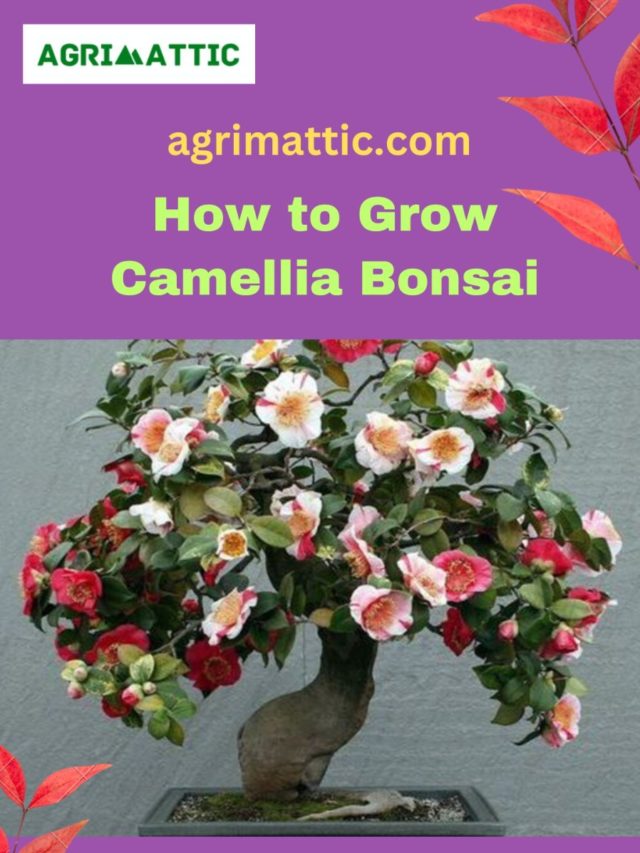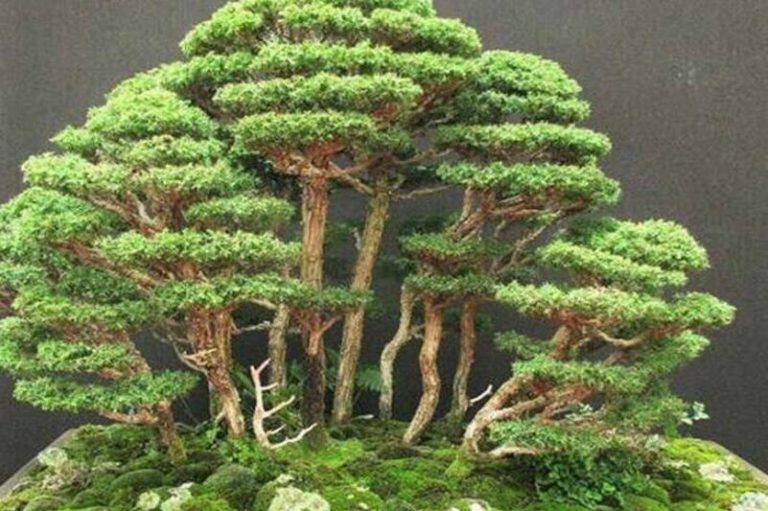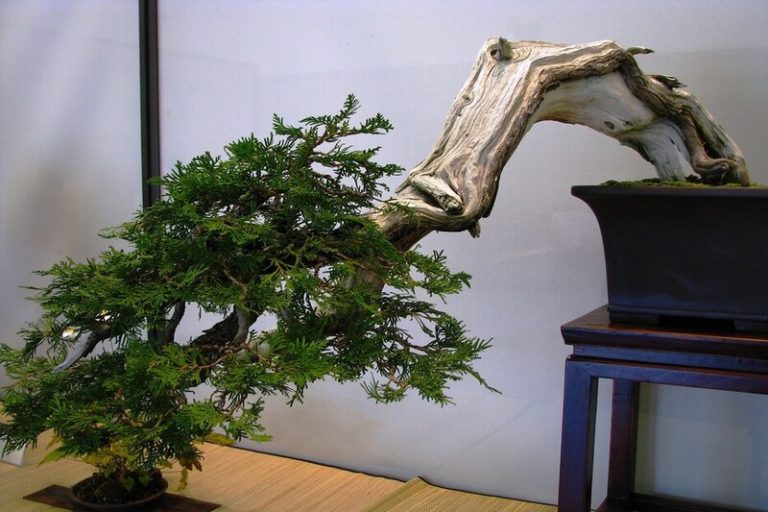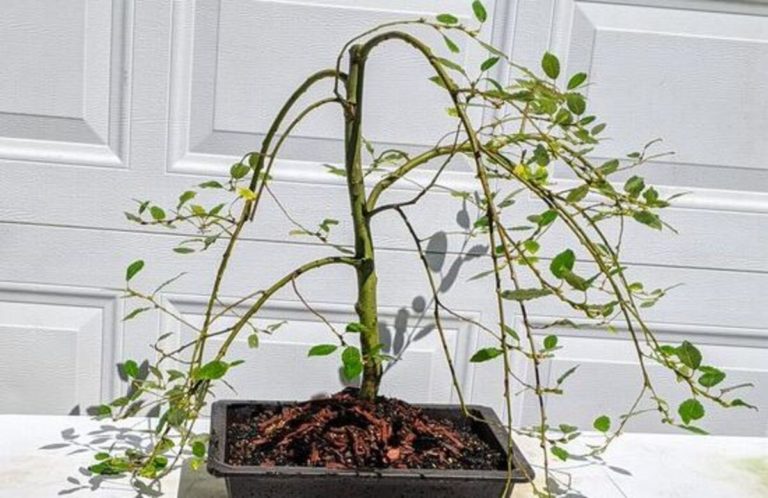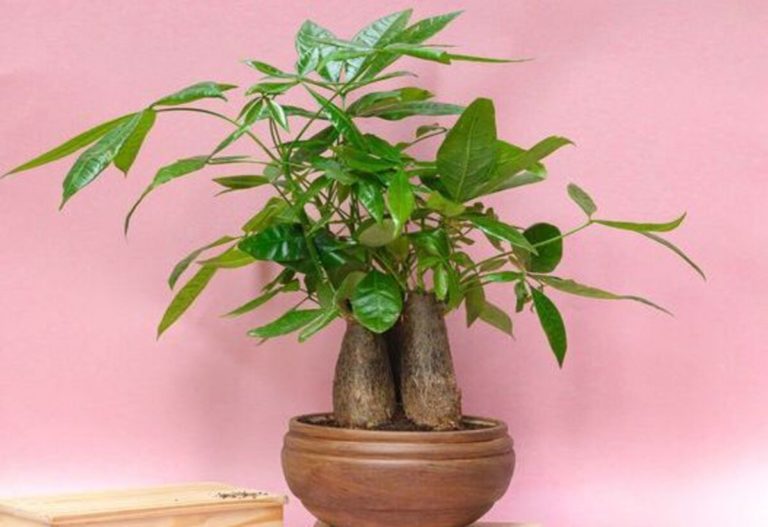Camellia Bonsai: The Captivating World of Miniature Floral Sculpture
Plant lovers all over the world have fallen in love with camellia bonsai, which is like a tiny work of art. We will explore the beautiful world of Camellia bonsai in this article. We will talk about its history, its different types, how to care for them, and the joy they bring to bonsai enthusiasts of all levels.
What is Camellia Bonsai?
Camellia bonsai is a small version of the Camellia plant that is created by carefully cutting and shaping the plant in the bonsai art form. Aesthetically pleasing small trees that look like full-sized Camellia plants are grown for this purpose.
People grow different kinds of Camellias and shape them into pretty, small trees with delicate leaves and lovely flowers. To make these tiny natural works of art, you need to be patient, skilled, and have an artistic eye.
History and Origins of the Camellia Bonsai
The origins and history of Camellia bonsai are firmly rooted in ancient Asian customs. Bonsai as an art form originated in China over a millennium ago and later spread to Japan, where it became highly refined and popular. Both nations have a long history of cultivating tiny trees and plants in containers to create miniature landscapes.
1. Origins in China:
The origins of bonsai, including Camellia bonsai, can be traced back to the Tang Dynasty (618–906 AD) in China. Chinese scholars and artists engaged in “pun-sai,” the cultivation of diminutive trees in containers. These diminutive trees were frequently depicted in Chinese art and literature, symbolizing the coexistence of humans and nature.
2. Development in Japan:
Around the sixth century, bonsai cultivation techniques were introduced to Japan, and the Japanese embraced and refined this art form. Due to the cultural significance of the Camellia plant in Japanese society, Camellia bonsai in particular rose to prominence in Japan. The Camellia, known as “Tsubaki” in Japanese, has been revered for its aesthetic value and symbolic significance.
3. Cultural Significance:
Camellia flowers are a sign of love, purity, and respect in Japan. It’s possible that this cultural importance helped make camellia bonsai famous in Japanese bonsai circles. Japanese bonsai masters worked on their skills for hundreds of years, trying out different species, like different kinds of Camellia, to make beautiful and interesting bonsai.
4. Spread to the West:
Camellia bonsai and other types of bonsai slowly spread to the West in the 20th century. Western plant lovers and enthusiasts took to this old art form, which led to the formation of bonsai communities and the growth of even more styles and methods for bonsai.
Camellia bonsai is still a beloved part of the bonsai practice, with fans all over the world appreciating its delicate beauty and cultural importance. Camellia bonsai has a long past that shows how popular this old art form is and how it can bring people from different countries and generations together through the skillful cultivation of small trees.
Camellia Bonsai and Their Symbolism
Like a lot of other types of bonsai, camellia bonsai has cultural and symbolic meanings. For Camellia bonsai, its meaning is closely linked to the Camellia flower itself, which has deep meanings in many cultures, especially in Asia. Some of the most popular meanings of camellia bonsai are listed below:
1. Love and Devotion:
People often see the Camellia flower and, by consequently, the Camellia bonsai as a sign of love, respect, and care. It stands for love that lasts forever and a strong wish that never ends in many cultures. Giving someone a Camellia tree can mean that you love and respect them a lot.
2. Gratitude and Acknowledgment:
In some cultures, Camellia flowers symbolize gratitude and appreciation. The gift of a Camellia bonsai can express gratitude for a person’s presence or actions in your life.
3. Admiration and Perfection:
Camellia bonsai, with their carefully shaped stems and lovely leaves, represent awe at how perfect nature is and the search for beauty. They stand for appreciating the natural beauty of life.
4. Resilience and Longevity:
Bonsai trees, like Camellia bonsai, are often seen as a sign of strength, endurance, and long life. The grower’s persistence and patience are shown by the careful care and attention needed to keep a bonsai healthy.
5. Purity and Faithfulness:
In some countries, the white Camellia flower stands for honesty and purity. A Camellia tree with white flowers can mean that your heart is pure and your relationships are strong.
6. Beauty in Adversity:
Bonsai, like Camellia bonsai, represent the idea of finding beauty in bad situations. These tiny trees, which are usually grown in small pots, show how nature can overcome problems and limits.
The camellia bonsai plant can represent many things, such as love, thanks, respect, strength, purity, and beauty in the face of hardship. What the Camellia flowers mean can change depending on the culture and the color of the flowers. No matter how you look at it, the camellia bonsai is a strong representation of nature beauty, human connection, and the spirit of life that never dies.
Characteristics of the Camellia Bonsai
Like other bonsai trees, camellia bonsai has special features that make it stand out and be interesting. Here are some of the most important things about Camellia bonsai:
1. Small Size:
The most important thing about all bonsai, including Camellia bonsai, is that they are small. To keep these trees small while still looking like full-sized trees, they are carefully clipped and trained.
2. Evergreen Foliage:
Camellia bonsai trees are evergreen, which means they keep their leaves all year. This makes them look better because the lush green leaves make you feel alive no matter what time of year it is.
3. Beautiful Flowers:
The flowers on Camellia bonsai are one of their most beautiful traits. Camellia bonsai can have flowers with one or two petals and different colors, like white, pink, red, and sometimes yellow. It depends on the species and type. Most of the time, these flowers are big compared to the bonsai, which makes them look beautiful.
4. Glossy Leaves:
The dark green, shiny leaves of the camellia tree make it look even better. The leaves’ shiny surface reflects light, making the tree look healthy and full of life.
5. Unique Trunk and Bark:
The trunk of a Camellia tree can get interesting colors and patterns over time with good care. Some older Camellia bonsai trees have stems that are bent or gnarled, which makes them look even better. Even though the bark is normally smooth, it can get worn down over time, especially on older trees.
6. Slow Growth:
Like most bonsai trees, camellia bonsai trees move slowly as they grow. Because it grows slowly, tree lovers can carefully shape and trim the tree over many years, making patterns that are very complex and well-defined.
7. Artistic Shapes:
Camellia bonsai can be made in many ways, such as formal upright, informal upright, slanting, cascade, and semi-cascade. All of the different styles show off the artistry of the bonsai grower and make the tree look better altogether.
8. Seasonal Changes:
Camellia trees go through seasonal changes just like their bigger relatives. In the spring, they might grow new leaves and then flowers. The leaves can change color in the fall, which makes the tree look even more interesting.
Camellia bonsai have small size, evergreen leaves, beautiful flowers, shiny leaves, unique trunk and bark features, slow growth rate, artistic forms, and changes with the seasons. Camellia bonsai trees are very popular among bonsai fans because of these traits, which also add to their classic beauty and charm.
How to Grow Camellia Bonsai
Growing a Camellia bonsai can be a rewarding and artistic endeavor. Here’s a step-by-step guide on how to grow a healthy and beautiful Camellia bonsai:
Choose the Right Camellia Species: Select a Camellia species suitable for bonsai cultivation. Common choices include Camellia sasanqua and Camellia japonica. Consider factors like climate compatibility and the size of the bonsai you want to create.
Select the Right Container: Choose a shallow and wide container with drainage holes. Bonsai pots are typically shallow to restrict root growth and encourage a compact tree structure.
Prepare the Soil: Use well-draining bonsai soil or create a mix of akadama, pumice, and lava rock. A well-draining soil mix is crucial to prevent waterlogged roots.
Planting the Camellia Bonsai: Carefully remove the Camellia from its nursery container and trim the roots. Place the tree in the center of the bonsai pot and fill the pot with the prepared soil mix. Gently tamp down the soil and water thoroughly.
Positioning and Light: Camellia bonsai prefers partial shade. Place the bonsai where it receives filtered sunlight or morning sun and afternoon shade. Too much direct sunlight can scorch the leaves.
Watering: Keep the soil consistently moist, but not waterlogged. Water the bonsai thoroughly when the top layer of soil feels slightly dry. Avoid letting the soil completely dry out.
Pruning and Shaping: Regular pruning and shaping are required for bonsai Camellias. As the tree develops, prune undesirable branches and shape it to maintain the desired form. To promote branching, prune back new growth.
Wiring and Training: Use wire to gently guide branches into the desired shape. Be careful not to damage the bark or branches. Wiring is typically done during the tree’s dormant period in late winter or early spring.
Fertilizing: Fertilize your Camellia bonsai during the growing season (spring and summer) with a balanced liquid fertilizer. Reduce or stop fertilizing during the fall and winter when the tree is dormant.
Protection from Cold: Camellia bonsai is generally hardy, but protection from extreme cold is necessary, especially for young or newly styled trees. Place the bonsai in a sheltered location or use frost protection during winter.
Repotting: Repot your Camellia bonsai every 2-3 years to refresh the soil and prune the roots. Repotting is typically done in early spring before the tree enters its active growth phase.
Pest and Disease Management: Keep an eye out for pests like aphids, scale insects, and spider mites. Treat infestations promptly and ensure good airflow around the tree to prevent diseases.
By following these steps and providing your Camellia bonsai with the necessary care and attention, you can cultivate a beautiful and healthy miniature tree that exemplifies the natural beauty of the Camellia plant. Keep in mind that growing a bonsai is a meticulous and ongoing process that requires consistent maintenance and commitment to achieve the desired results.
Displaying and Showcasing the Camellia Bonsai
Displaying and showcasing a Camellia bonsai is an excellent method to appreciate and share its attractiveness. Here are some suggestions for effectively displaying and showcasing your Camellia bonsai:
Choosing the Right Display Table:
Select a table or stand that complements the aesthetics of your Camellia bonsai when deciding on a display table. The table should be robust and raise the bonsai to eye level so that the details can be appreciated.
Selecting an Appropriate Pot:
The bonsai container should complement the tree’s overall design and color. Traditional earth tones or glazed containers can boost the aesthetic appeal. Ensure that the size of the container complements the bonsai’s proportions.
Using Accent Plants and Decorative Elements:
Introduce small accent plants, rocks, or figurines to create a natural setting around the Camellia bonsai. These elements can enhance the overall composition and add depth to the display.
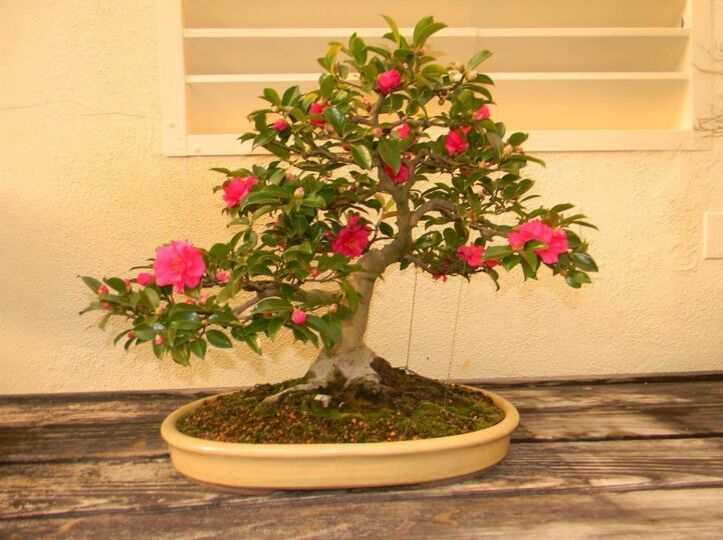
Arranging with Balance and Harmony:
Place the bonsai slightly off-center on the display table, following the principles of balance and harmony in bonsai aesthetics. The tree’s visual weight should be balanced with the other elements on the display.
Choosing the Right Lighting:
Ensure your Camellia bonsai is well-lit, allowing viewers to appreciate its details. Natural light from a window is ideal, but if displayed indoors, consider using a full-spectrum grow light to provide adequate illumination.
Rotating the Display:
Rotate your Camellia bonsai regularly to promote even growth. Displaying different sides of the bonsai at different times allows viewers to appreciate the tree from various angles.
Seasonal Themes and Displays:
Tailor your display to the seasons. For example, during the blooming season, position the bonsai to highlight its flowers. In autumn, showcase the changing colors of the leaves. Seasonal accents and decorations can complement the bonsai’s natural beauty.
Participating in Bonsai Exhibitions:
Consider participating in bonsai exhibitions and competitions to showcase your Camellia bonsai to a wider audience. These events provide opportunities to learn from others, receive feedback, and appreciate different bonsai styles.
Documenting Your Bonsai:
Keep a record of your Camellia bonsai’s development, including photos, pruning dates, and styling changes. Documenting its progress not only helps you track its growth but also adds to its story and value.
Sharing Your Knowledge:
Share your knowledge and passion for Camellia bonsai with others. Engaging with fellow enthusiasts, leading workshops, or writing about your experiences can enrich the bonsai community and inspire others.
By thoughtfully displaying and showcasing your Camellia bonsai, you not only enhance its beauty but also contribute to the rich tradition and artistry of bonsai cultivation. Sharing your passion for bonsai with others can create connections and inspire a new generation of bonsai enthusiasts.
How to Care for and Maintain a Camellia Bonsai
Caring for and maintaining a Camellia bonsai requires attention to several key aspects to ensure its health and beauty. Here are essential tips for the care and maintenance of your Camellia bonsai:
1. Watering:
- Consistent Moisture: Camellia bonsai prefer consistently moist but not waterlogged soil. Water thoroughly when the top inch of the soil feels slightly dry. Avoid allowing the soil to dry out completely.
- Avoid Watering in Full Sun: Water your bonsai in the morning or late afternoon to prevent water droplets from acting as magnifying glasses under direct sunlight, potentially scorching the leaves.
2. Light and Temperature:
- Partial Sun: Camellia bonsai thrive in partial sun. Place them where they receive filtered sunlight or morning sun with afternoon shade.
- Protect from Extreme Cold: While they are generally hardy, protect your Camellia bonsai from extreme cold temperatures, especially during winter.
3. Fertilizing:
- Balanced Fertilizer: Use a balanced liquid fertilizer during the growing season (spring and summer). Reduce or stop fertilizing during fall and winter when the bonsai is dormant.
4. Pruning and Shaping:
- Regular Pruning: Prune your Camellia bonsai regularly to maintain its shape and remove dead or unwanted branches.
- Pinching: Pinch back new growth during the growing season to encourage branching and a more compact shape.
- Wiring: Use gentle wiring techniques to shape branches. Wiring is typically done during the tree’s dormant period in late winter or early spring.
5. Repotting:
- Repot Every 2-3 Years: Repot your Camellia bonsai every 2-3 years, typically in early spring. Repotting helps refresh the soil, prevent root binding, and encourage healthy growth.
- Root Pruning: During repotting, trim the roots to maintain the bonsai’s size and health.
6. Pest and Disease Management:
- Vigilance: Regularly inspect your bonsai for pests like aphids, scale insects, and spider mites. Treat infestations promptly to prevent damage.
- Good Air Circulation: Ensure good airflow around the bonsai to prevent common bonsai diseases related to humidity and stagnant air.
7. Winter Care:
- Protect from Frost: In cold climates, protect your Camellia bonsai from frost by placing it in a sheltered location or using frost protection.
- Reduced Watering: Reduce watering in winter, as the tree’s growth slows down during the dormant period.
8. Observation and Patience:
- Observation: Regularly observe your Camellia bonsai for any signs of stress, pests, or diseases. Early detection can prevent major issues.
- Patience: Bonsai cultivation is a patient art. Allow your tree time to grow and develop its natural beauty.
By following these care and maintenance guidelines, you can ensure the longevity, health, and aesthetic appeal of your Camellia bonsai. Regular attention, combined with patience and a keen eye, will result in a beautiful and thriving miniature tree.
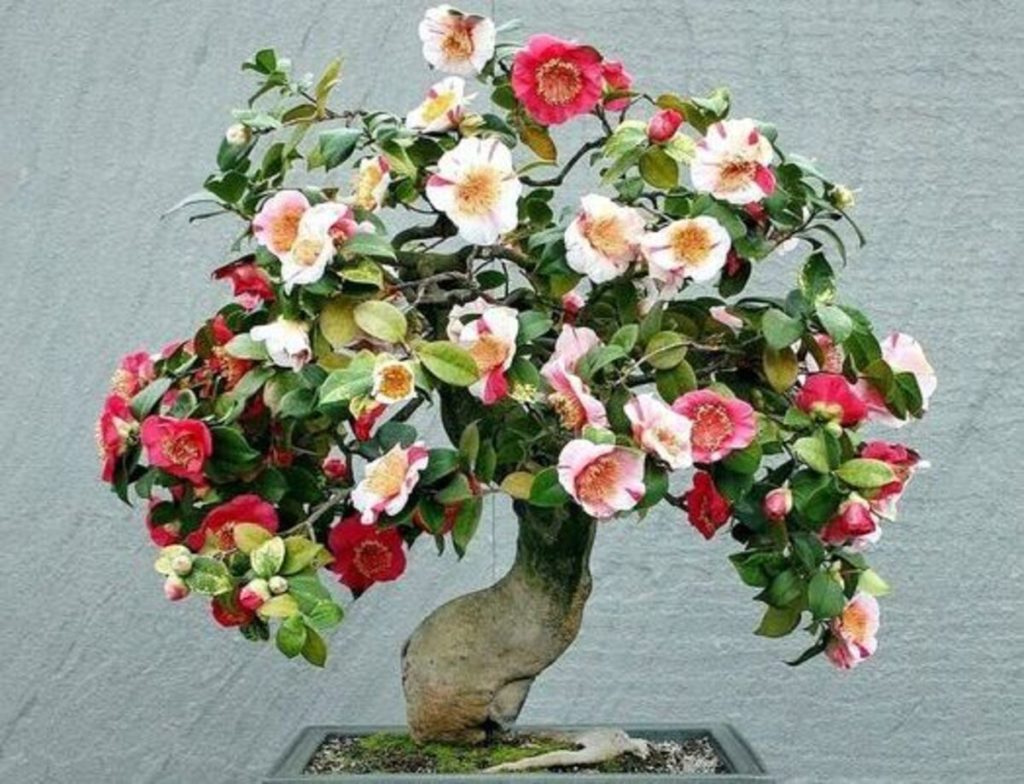
Camellia Bonsai Care Sheet
| Aspect | Care Tips |
|---|---|
| Watering | Keep the soil consistently moist but not waterlogged. Water thoroughly when the top layer of soil feels slightly dry. Avoid letting the soil completely dry out. |
| Light and Temperature | Place the bonsai in partial sun, receiving filtered sunlight or morning sun with afternoon shade. Protect from extreme cold temperatures. |
| Fertilizing | Use a balanced liquid fertilizer during the growing season (spring and summer). Reduce or stop fertilizing during the fall and winter when the bonsai is dormant. |
| Pruning and Shaping | Regularly prune to maintain shape and remove dead or unwanted branches. Pinch back new growth during the growing season to encourage branching. Use gentle wiring techniques for shaping during the dormant period. |
| Repotting | Repot every 2-3 years in early spring to refresh the soil and prevent root binding. Trim the roots to maintain bonsai size and health during repotting. |
| Pest and Disease Management | Regularly inspect for pests such as aphids, scale insects, and spider mites. Treat promptly to prevent damage. Ensure good airflow to prevent bonsai diseases. |
| Winter Care | Protect from frost by placing the bonsai in a sheltered location or using frost protection. Reduce watering during the winter when growth slows down. |
| Observation and Patience | Regularly observe the bonsai for signs of stress, pests, or diseases. Early detection prevents major issues. Practice patience; bonsai cultivation is an art that requires time and care. |
Following these maintenance instructions for each aspect of your Camellia bonsai will help ensure its health and vitality. Keep in mind that each bonsai is unique, so tailor your care regimen to the tree’s specific requirements and responses.
Conclusion
Growing Camellia bonsai is a delightful journey that offers both beginners and experienced gardeners a chance to connect with nature on a smaller scale. Its simplicity and grace make it a perfect choice for anyone looking to explore the world of bonsai cultivation. So, why wait? Start your Camellia bonsai adventure today and bring a touch of natural elegance into your life.
FAQ
Q: What is Camellia Bonsai?
A: Camellia Bonsai is a miniature version of the Camellia plant, meticulously cultivated and shaped in the art of bonsai. It involves shaping the Camellia tree to create a small, aesthetically pleasing representation of its full-sized counterpart.
Q: Can I Grow Camellia Bonsai Indoors?
A: Yes, Camellia Bonsai can be grown indoors, but they need bright, indirect light. Consider placing them near a south or west-facing window where they receive filtered sunlight. Adequate humidity levels are also essential for indoor cultivation.
Q: When and How Should I Prune My Camellia Bonsai?
A: Regular pruning can be done throughout the growing season to maintain the bonsai’s shape. Remove dead or unwanted branches, and pinch back new growth to encourage branching. Major pruning is usually done during the dormant period in late winter or early spring.
Q: How Often Should I Water My Camellia Bonsai?
A: Water your Camellia Bonsai when the top layer of soil feels slightly dry. Water thoroughly, allowing excess water to drain out. Avoid waterlogging the soil, as it can lead to root rot. The frequency of watering depends on factors like climate, pot size, and humidity.
Q: Can Camellia Bonsai Survive Cold Weather?
A: Camellia Bonsai are generally hardy, but they should be protected from extreme cold temperatures, especially young or newly styled trees. Shelter them in a garage or cover them with frost cloth during frosty nights to prevent freezing.
Q: How Do I Deal with Pests on my Camellia Bonsai?
A: Regularly inspect your Camellia Bonsai for pests such as aphids, scale insects, and spider mites. Insecticidal soap or neem oil can be used to treat mild infestations. For severe cases, consult with a local nursery or bonsai expert for appropriate pest control methods.
Q: Can I Repot My Camellia Bonsai Anytime?
A: It is best to repot your Camellia Bonsai during early spring, just before the growing season starts. Repotting allows you to refresh the soil, trim the roots, and maintain the health of the bonsai. Repotting too frequently can stress the tree, so aim for every 2-3 years.
Q: How Long Does it Take for a Camellia Bonsai to Bloom?
A: The time it takes for a Camellia Bonsai to bloom depends on its age, health, and specific variety. Typically, mature Camellia Bonsai that are well-cared-for can produce blooms during the appropriate flowering season, which varies based on the Camellia species.
Q: Can I Shape My Camellia Bonsai in Any Style I Want?
A: Camellia Bonsai can be shaped in various styles, but the choice of style should complement the natural characteristics of the tree. Common styles include formal upright, informal upright, slanting, cascade, and semi-cascade. Work with the natural growth pattern and consult bonsai styling guides for suitable options.
Q: Is Camellia Bonsai Suitable for Beginners?
A: Camellia Bonsai can be suitable for beginners, especially those who are enthusiastic and willing to learn. However, they require proper care, so beginners should be prepared to invest time in understanding the specific needs of Camellia Bonsai and be patient in their cultivation efforts. Consulting experienced bonsai growers and attending workshops can be beneficial for beginners.
Also Read:


